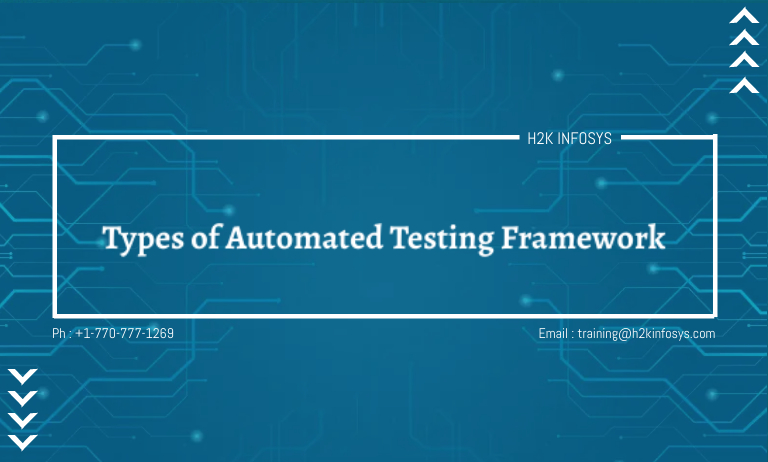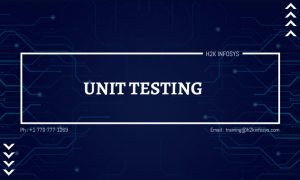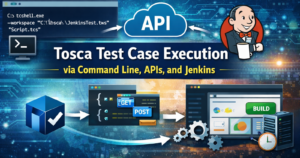Automated testing frameworks have revolutionized the software development and quality assurance industries. By providing a structured approach to testing, these frameworks ensure that test cases are executed consistently, efficiently, and with minimal human intervention. Selecting the right automated testing framework is essential for achieving robust test coverage and maintaining the quality of software applications.
In this blog, we’ll delve into the types of Automated testing frameworks, their features, advantages, and the scenarios in which each is most beneficial.
What Is an Automated Testing Framework?
An automated testing framework is a set of rules, guidelines, and tools that streamline the testing process. It provides the foundation for automated test scripts, ensuring consistency, reusability, and scalability. These frameworks simplify the integration of testing activities within the software development lifecycle and help reduce overall testing costs.
Types of Automated Testing Frameworks
Automated testing frameworks can be broadly classified into the following categories:
- Linear Automation Framework
- Modular-Based Testing Framework
- Data-Driven Testing Framework
- Keyword-Driven Testing Framework
- Hybrid Testing Framework
- Behavior-Driven Development (BDD) Framework
Each framework has unique characteristics and is suited to specific project requirements.
Linear Automation Framework
The Linear Automation Framework, also known as a record-and-playback framework, is the simplest form of automated testing.
Features
- Test scripts are created by recording user actions.
- The framework executes the recorded scripts sequentially.
- Little to no programming knowledge is required.
Advantages
- Ideal for small applications or one-time testing requirements.
- Quick to set up and execute.
- Suitable for teams with limited coding experience.
Disadvantages
- Lacks scalability and reusability.
- Maintenance can become challenging if the application undergoes frequent changes.
Use Cases
- Best suited for testing small, stable applications.
- Useful for smoke testing and one-off test cases.
Modular-Based Testing Framework
In this framework, the application under test is divided into smaller, independent modules. Each module is tested separately, and test scripts for individual modules are combined to create a comprehensive test suite.
Features
- Modular structure for better organization.
- Test scripts for each module are reusable.
Advantages
- High scalability and maintainability.
- Changes in one module require updates only in the associated test script.
- Promotes code reusability.
Disadvantages
- Requires intermediate coding skills.
- Initial setup can be time-consuming.
Use Cases
- Suitable for testing applications with well-defined modules.
- Ideal for large-scale applications where reusability is a priority.
Data-Driven Testing Framework
The Data-Driven Testing Framework separates test logic from test data. Test scripts are executed multiple times with varying input data, often stored in external files such as Excel sheets, CSV files, or databases.
Features
- External data sources are used for input.
- Reduces the number of test scripts by iterating the same script with different data sets.
Advantages
- Reduces redundancy in test scripts.
- Increases test coverage by testing various input combinations.
- Easy to maintain test cases when data changes.
Disadvantages
- Requires technical expertise to implement.
- Debugging and troubleshooting can be complex.
Use Cases
- Best for scenarios with extensive input data variations.
- Ideal for applications requiring rigorous functional or regression testing.
4. Keyword-Driven Testing Framework
Keyword-Driven Testing is a method where keywords (actions) represent specific operations. Each keyword is associated with a particular function in the code, and the test scripts are designed based on these keywords.
Features
- Relies on predefined keywords for test actions.
- Uses a table-driven approach, where keywords and associated test data are stored in tables.
Advantages
- Test scripts are easy to read and understand, even for non-programmers.
- Promotes reusability of keywords across multiple test cases.
- Reduces the dependency on programming knowledge.
Disadvantages
- Requires significant initial effort to define keywords.
- Maintenance can be challenging if keywords need frequent updates.
Use Cases
- Useful for testing applications with repetitive actions.
- Best suited for teams with mixed technical expertise.
Hybrid Testing Framework
The Hybrid Testing Framework combines features of two or more frameworks to leverage their individual strengths. It is highly customizable and can be tailored to meet specific project requirements.
Features
- Integrates multiple frameworks into one cohesive solution.
- Offers flexibility in handling different testing scenarios.
Advantages
- Highly adaptable to diverse testing needs.
- Optimizes the benefits of multiple frameworks.
- Facilitates better test coverage and maintainability.
Disadvantages
- Complex to design and implement.
- Requires a team with strong technical skills.
Use Cases
- Suitable for projects with diverse testing requirements.
- Ideal for organizations seeking a long-term, scalable testing solution.
Behavior-Driven Development (BDD) Framework
The BDD Framework focuses on collaboration between technical and non-technical stakeholders. It uses natural language constructs to define test scenarios, making them easy to understand for all team members.
Features
- Test scenarios are written in Given-When-Then format.
- Uses tools like Cucumber, SpecFlow, and Behave.
Advantages
- Bridges the gap between developers, testers, and business stakeholders.
- Test cases are easy to understand and communicate.
- Encourages collaboration and alignment with business goals.
Disadvantages
- Requires familiarity with BDD tools and syntax.
- Initial setup can be time-intensive.
Use Cases
- Best for Agile teams emphasizing collaboration.
- Suitable for testing user stories and acceptance criteria.
How to Choose the Right Framework
Selecting the right framework depends on several factors, including:
- Application Complexity: For simple applications, Linear or Modular frameworks may suffice, while complex systems may require Hybrid or Data-Driven frameworks.
- Team Skillset: Teams with limited programming expertise may benefit from Keyword-Driven or BDD frameworks.
- Testing Goals: Identify whether you need functional testing, regression testing, or scalability.
- Budget and Resources: Consider the cost and time required for implementation and maintenance.
Conclusion
Understanding the types of automated testing frameworks and their capabilities is essential for optimizing the software testing process. Each framework has its strengths and weaknesses, making it suitable for different scenarios.
For organizations aiming to build robust, scalable, and efficient testing systems, a Hybrid or Data-Driven framework may offer the flexibility needed. However, if collaboration and stakeholder involvement are priorities, a BDD framework could be the ideal choice.
By carefully assessing your project requirements and team capabilities, you can select the framework that best aligns with your testing objectives. Automated testing frameworks not only improve testing efficiency but also ensure software reliability and quality, contributing to the overall success of your projects.


























One Response